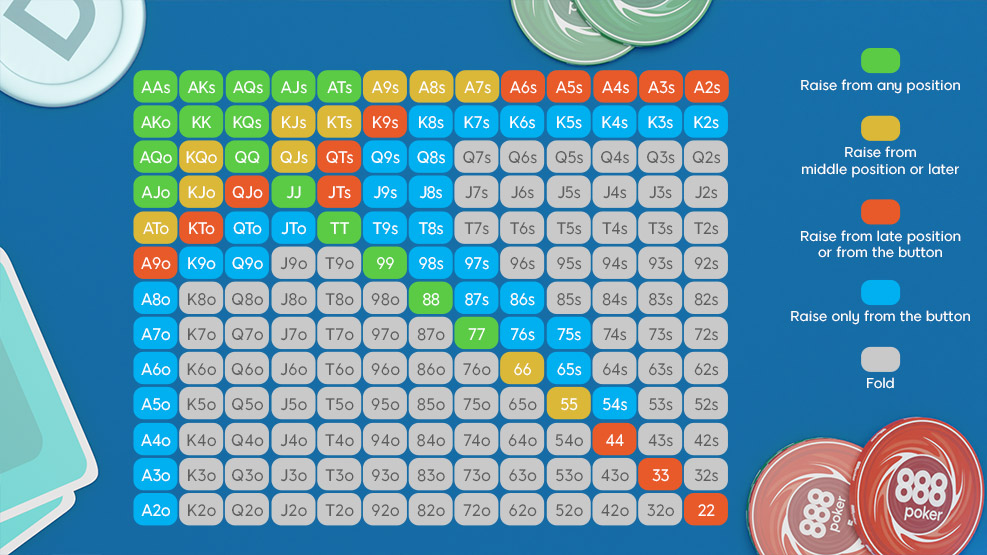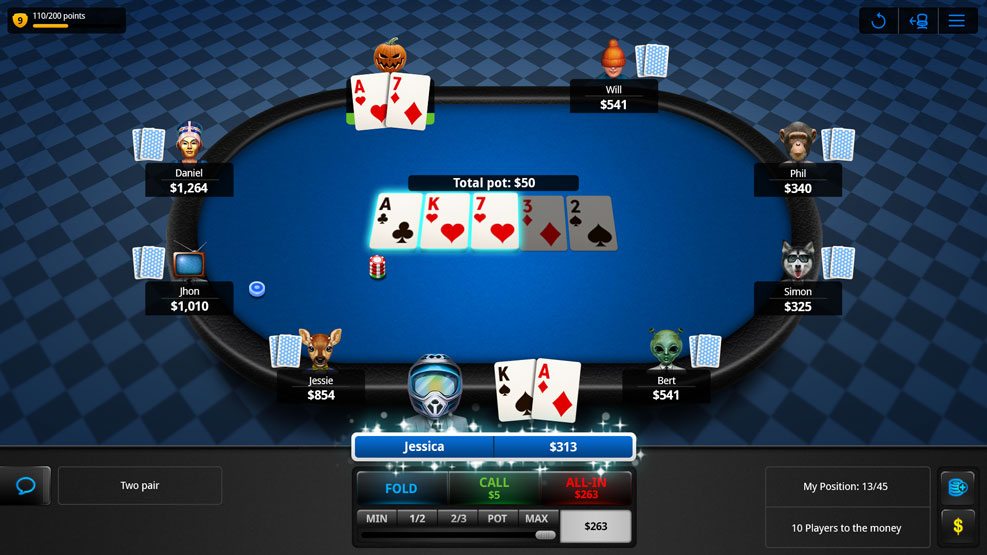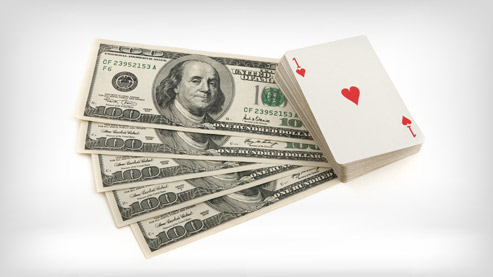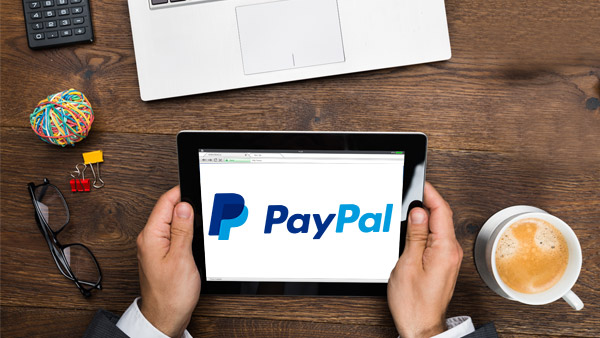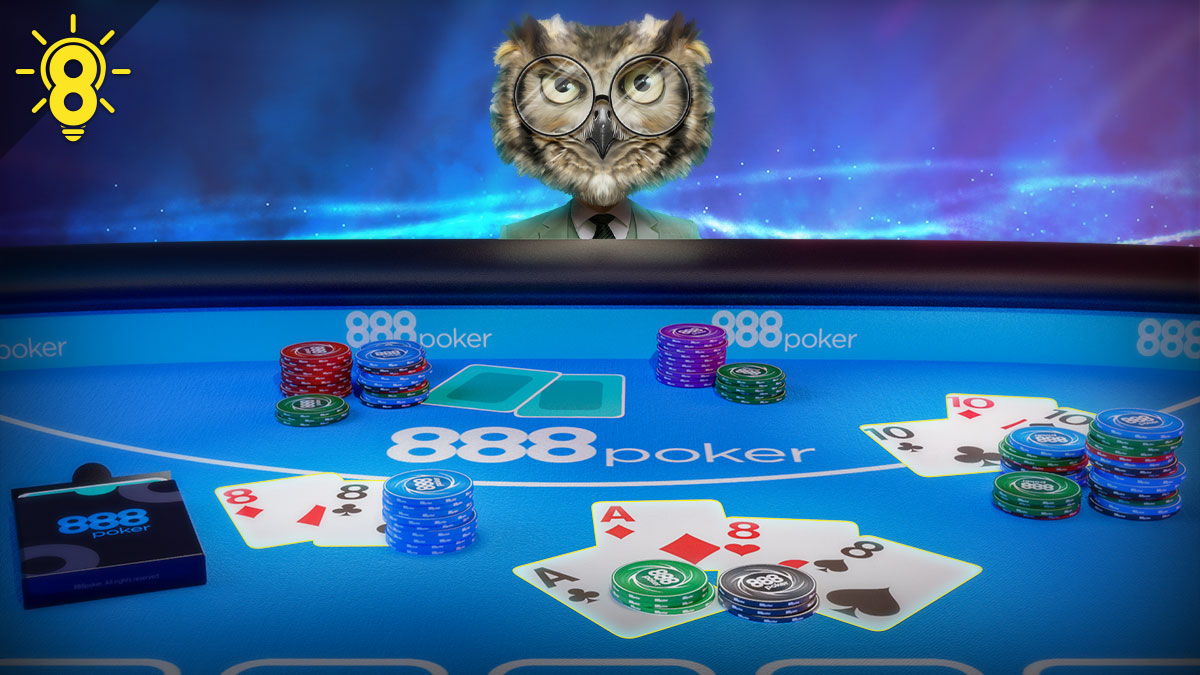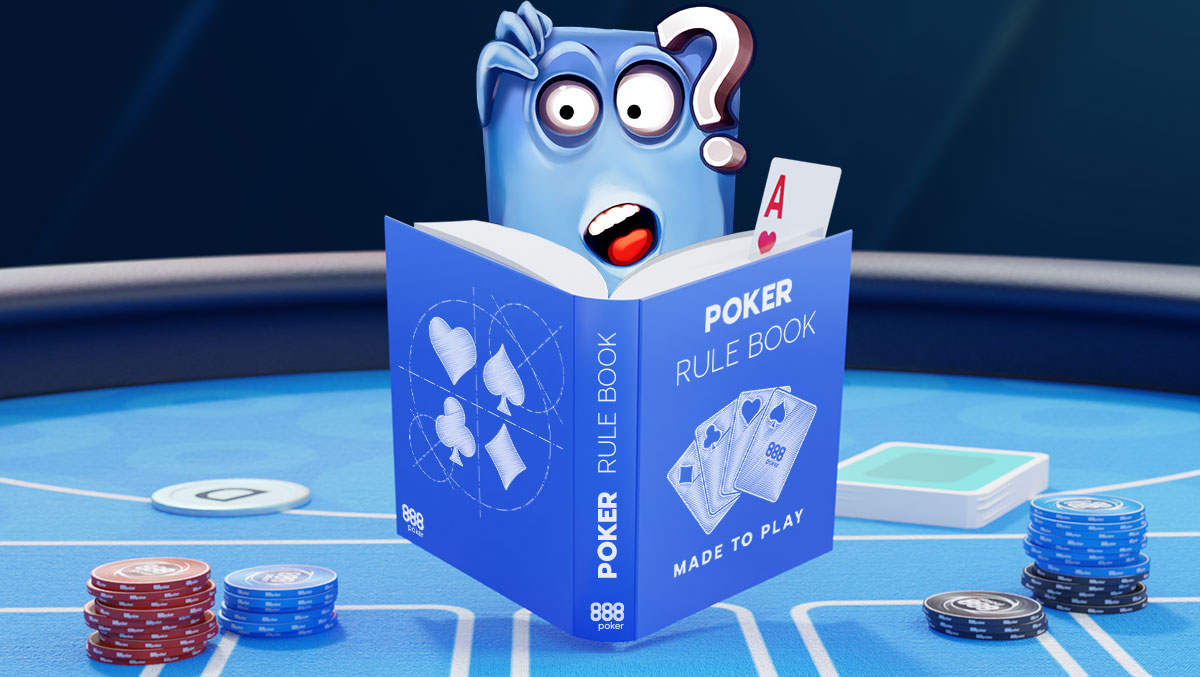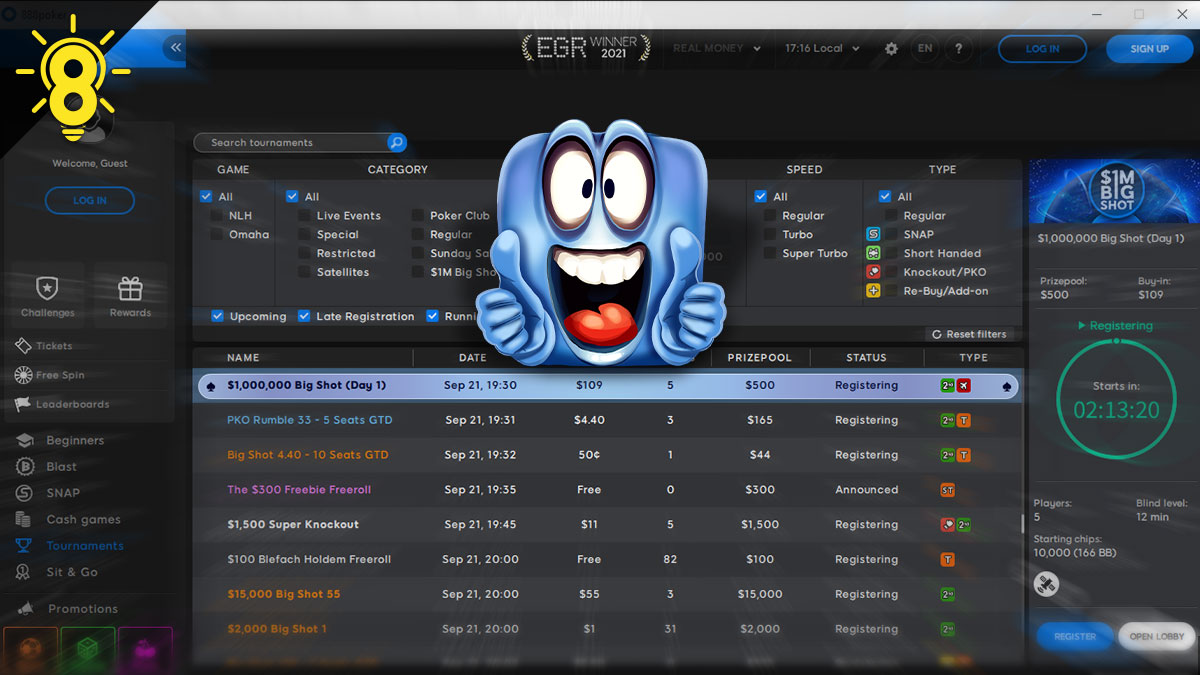You can't say too much about the importance of learning poker strategy. But yet, it's amazing just how many players actually go into battle without any protection! They must be mad! We'd like to see Manny Pacquiao or Floyd Mayweather going at each other in the ring without gloves. That's sort of what it's like to plunk down your roll at a table, not having any idea how you're going to play.
This strategy guide from 888poker will explain what you need to know before entering the lion's den...
Let's get started.
Hold’em Strategy: The 5 Golden Rules
If you asked a hundred people to explain the difference between strategy and tactics, not a lot would get it right. Tactics are short-term while strategy involves long term planning - and that is the basic difference. We use tactics while in the thick of a poker game, but we need strategy to come out the other end smelling of roses!
There are essentially five key strategic areas that you will need to focus on when you play Texas Hold’em cash games. For Texas Hold'em tournament strategy, there exists a whole set of other poker tournament tips.
While there are many things that add up to good poker strategy, we feel that these are the Top Five for new or intermediate players. They are: “Opening Hands”, “Bet Sizing”, “Limping”, “Knowing When to Fold” and “Position”.
Many players would argue that there are more relevant strategy tips. However, if you can master these five “Golden Rules”, and focus on them, you will be better than most Texas Hold’em players.
5 Best Texas Holdem Strategy Tips are:
- Choose an opening hands that can make you money in any given situation.
- Follow what's happening at your table to correctly size your bet.
- Limping is bad for you. Avoid limping!
- Make the right folds and increase your profits.
- “Have position” over your opponent.
1. Starting with Opening Hands
The hands that you choose to go into battle with in Texas Hold’em are vital. That said, starting hands are only one part of the game. Position is a major factor when it comes to deciding which hands you should play. In general, you can widen your starting hand range the closer you get to the Button.
You should also consider the amount of players in a hand. Hands can have less value (how much you can get paid off) against 1 player than when you're up against 6. On the flip side, these same hands can have greater bluffing value when heads-up because you only have one opponent to convince you have the nuts!
So, part of the selection process in choosing opening hands is not only hand strength, but how that hand can make you money in any given situation. A hand like a small suited connector, for example, plays better as a bluff in a heads-up pot but more for value multi-way. It's unlikely that you'll get paid off with a suited connector type hand, heads-up. And, it's even more unlikely that you'll be able to bluff in a multi-way pot.
So, when you select an opening hand, you need to be aware of how it will make you money after the flop. If you don’t know how a hand will make you money, then you are playing blind, and that is hardly good poker.
2. Bet Sizing with Confidence
In No Limit cash games, players have the ability to bet whatever they have in front of them. It's this very freedom that gets a lot of players into trouble. So, bet sizing is the second most important subject on our list of Texas Hold'em 5 Golden Rules.
Bet Sizing – Pre-Flop
One of the best tips for correctly sizing your bets is to follow what's happening at your table. If the standard pre-flop raise is 2.5xBB, as a beginner this is the line you should take. If you try to be clever and raise an odd amount, it could backfire. Your bet size has to be familiar and make sense to your opponents. By raising unusual amounts, all you're doing is making it harder for players to make a decision. Making it difficult for your opponents to think, post-flop, can be a good thing. However, pre-flop it normally results in that loose call you just don't want or need.
Bet Sizing - Post-flop
If you were the raiser pre-flop, a c-bet (continuation bet, after a pre-flop raise) is almost mandatory. You should size your c-bet between 50% and 70% of the pot. The size of your bet will help define the strength of your hand. This is especially true when playing at the lower levels. Most inexperienced players will see a big c-bet as strength. You will be able to get the hand over – whether or not you've hit the flop.
You want your opponents to know (or think) that you have them beat. If you bet too small, you could end up facing a re-raise or a check-raise, depending on your position. Bet too big and you could find yourself pot-committed to a hand that is probably going to be the loser.
Here's a simple example of proper c-bet sizing:
You're UTG+1 in a 9-Max $1/$2 No Limit Hold'em cash game. You get dealt Pocket JJ and raise the table standard of 2.5xBB. It gets folded around to the Button who calls. Both Blinds fold. The flop comes down Ad-6h-2s. Now, the Ace is a scare card, but you feel that the BTN player would have 3-bet with a strong Ace, and would have tossed a weak one. Bet too small here and a savvy opponent could raise you, representing the Ace, and bluff you off the pot. You bet 2/3 pot with confidence and get the fold.
It's not always that easy, and your opponent could have called you with a suited Ace. And, if the board comes down 7d-8d-9d and you're holding As-Ks in a multi-way pot, a c-bet could be like throwing down a drain. However, the c-bet is a standard and necessary play. And a correctly sized c-bet will usually get the intended result – a fold and you winning the pot.
Bet Sizing - Bluffs
Let's say that you want to bluff in a $20 pot. You feel that there is an excellent chance that your opponent would fold. If you bet $20, you could be in for trouble if you're wrong and this guy decides to call – or worse come over the top. This would be a poor bet size if your opponent would fold to a $10 bet. Because if the bluff fails, you would lose an extra $10, needlessly.
Bet Sizing - Value
Now, let's spin the bottle 180 degrees. When you have the nuts, you should try to bet for value. For example, you've got to the river, heads-up, with Ad-Ks on a board that reads: Ac-Kh-7h-3d-2s. You're quite certain that your opponent has the Ace, at the very least. If the pot is $50, and you bet $20, your opponent snap calls with two pair, you've probably left some money on the table. They might have called off another $10-$20! So, that's a classic bet sizing mistake.
The player that tends to be successful in games like Hold’em is the player that makes fewer bet sizing errors. Of course, you don't get to see your opponents’ cards before sizing your bets. But, by using the information you have on an opponent and how the hand was played, you'll be able to figure out the right amount to bet.
For example, a loose caller might be more likely to call you down with middle pair. Therefore, when you have a strong hand, your bet-sizing can be a little bigger for value – versus a tighter opponent who would be more inclined to fold.
3. No Limping Allowed!
Most of the best online poker players tend to open raise whenever they're first to enter the pot. If someone else has open-raised, they would either call that raise, 3/bet or fold – depending on their take on the open-raiser
5 Reasons Why Limping is Bad for You!
- When you limp in late position, you're giving the blinds an easy pass to see the flop for cheap with (more than likely) mediocre hands. Steal those blinds!
- If you feel the urge to limp more than raise, you're probably playing too many weak hands. If you can't raise them, fold 'em!
- When you limp into a pot, you'll probably find yourself post-flop facing multiple opponents with a mediocre holding. And you'll have no idea what anyone has.
- Limping into pots when you're out of position can be particularly risky. If you hit the board hard, you could end up not getting any value for the hand. Even worse, if you hit top pair with a weak kicker, you'll be kicking yourself on the river when your hand is beat by a better kicker.
- If you miss the board entirely, (which is more likely to be the case), you'll end you being the “dead money” in the pot. (Dead money is any money in the pot that has been contributed by players who have folded.)
One strategy that good players rarely use is the open limp. There is really only one instance where limping is correct. When the game is super-passive, and you're likely to see the flop for cheap with a speculative hand (like a suited connector, or any hand that is flop specific) that has good implied odds.
Whenever the action has been folded to you, the best play is to either raise or fold. The act of raising takes control of the hand and puts any caller on the defensive straight away. Good players tend to attack “limpers” because they see them as weak. And, in most cases, they're usually right.
So, unless you're in a multi-way pot for cheap, with suited connectors or set-mining a small pocket pair, avoid the open limp like the plague!
4. Knowing When to Fold
There is a little-known fact in the amateur poker world: Poker is as much about the bets you save as the bets you make. This mantra is rooted in knowing when to fold - a critical part of winning poker strategy. Bad poker players are bad for many reasons but quite often their primary weakness is that they simply do not fold when they should.
It is the act of folding that will consistently put keep your bankroll intact. Folding is perhaps the least understood concept of making money in poker.
Let's look at a very basic example:
In a $1/$2 cash game, a player gets dealt A-6 off suit on the SB. UTG+1 limps and the CO raises 2.5xBB. Our player has an Ace, but weak Aces have been the Achilles Heel of many a poker player. Playing this hand to a raise, out of position in a possible multi-way pot is unwise. Our player agrees and folds their SB – saving an additional 2BB call.
If this player makes this fold 10 times in a session, they could save a possible $40 (10 x $4). On the other hand if the same player calls with this hand 10 times in a session and loses, they would be down a possible $50 at least.
By folding and saving $40, our player can be more aggressive in more profitable situations. However, by loosely calling out of position with a mediocre hand, our player would more than likely lose a big chunk of their stack. They could be beat by an Ace with a better kicker or up against an over-pair. Either way, not knowing when to fold could be their downfall.
It's simple maths. Make the right folds and increase your profits.
5. Using Position
“Position” is a word that's banded about constantly in poker. Having position over your opponent is one of the biggest advantages that you can have in a poker game. But many people fail to understand just why this is the case.
- Firstly, when you “have position” on an opponent, you get to see them act before making your decision. It's that “you first” argument we've all had with a sibling or partner. If they don't break their neck scaling that 6-foot wall, then it's okay for you to have a go!
- Secondly, you can widen your starting hand ranges in position. Attack the blinds with wider ranges, as well as play profitably in many more multi-way pots. Why? All because you have been able to see the action unfold in front of you.
- And thirdly, you can use position to play more hands profitably post-flop. Having more information on an opponent is a huge advantage. You can use this extra info to bluff more accurately, value bet more effectively, make thin river calls and generally make better decisions all round.
If more poker players simply paid attention to their position, they could turn many losing sessions into winning ones!
And, if you can apply all 5 tips to your Hold'em game, you'll see an upwards difference in your bankroll.


